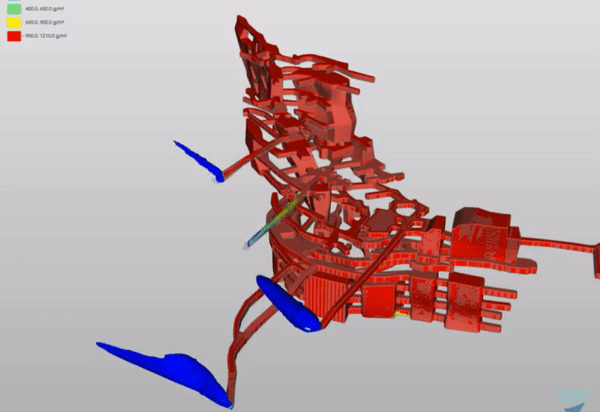Case study: Analysing air exchange in mine tunnels
- Paolo Casula
- Jun 12, 2024
- 1 min read
Updated: Mar 14

This case study, commissioned by Italmineraria SrL, involved assessing time and efficiency of air exchange within a 14 kilometres network of tunnels, that were carved through a mountain.
Figure 1 offers a view of the mountainside from the rear, featuring color-coded surface pressure influenced by wind flow.
Remarkably, a slight pressure variation of a few Pascals among the four tunnel entrances triggers natural ventilation. Fresh air is drawn in from the higher-pressure upper entrances, while stagnant air exits through the lower ones.

Figure 1: overview of the model
Video 1 displays a 3-hour transient simulation of air exchange, presented across 180 frames with a one-minute interval. The inflow rate into the mine approximates 16 kg/s. Notably, the natural ventilation doesn’t sufficiently reach the lower part of the mine, thus suggesting the need to add forced ventilation.
Video 2 showcases the same 3-hour transient scenario, incorporating an additional forced ventilation of around 6 kg/s, positioned at the mine’s lowermost point, which ensures optimized air exchange within the tunnels.
Video 1: transient simulation with natural ventilation only | Video 2: transient simulation with added forced ventilation |



Comments